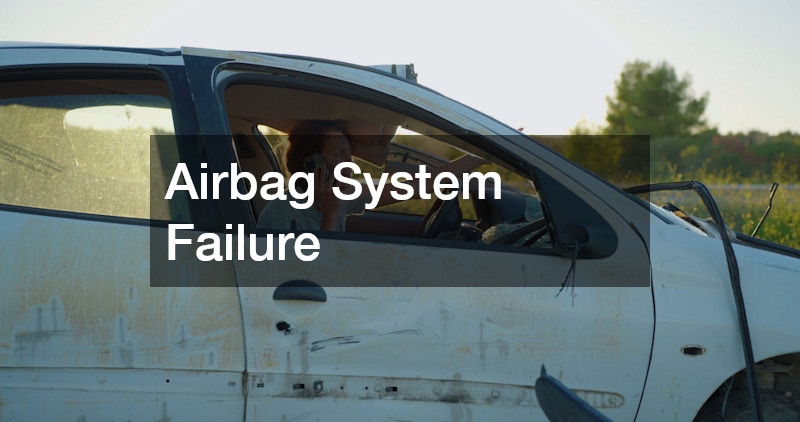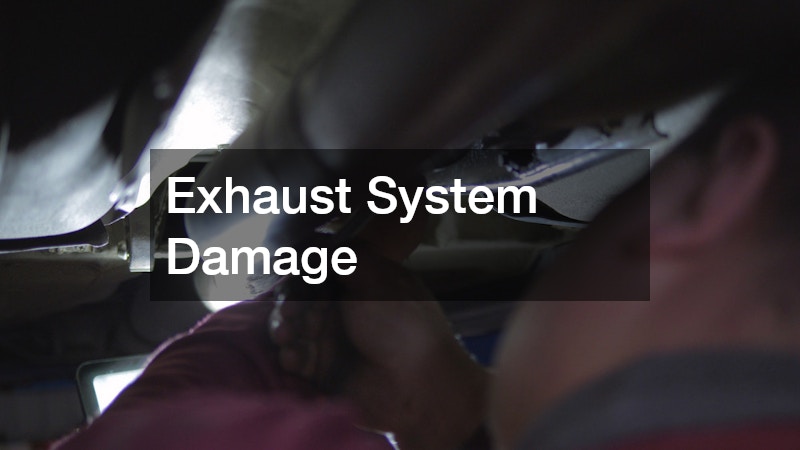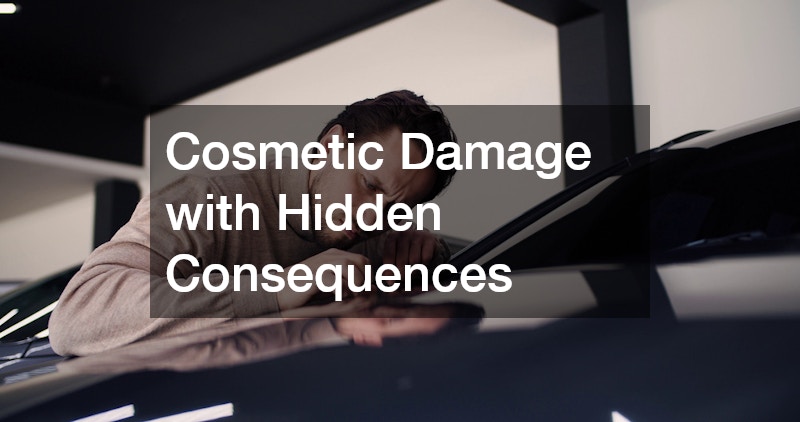Accidents can leave behind more than just visible damage—they can compromise the safety and functionality of a vehicle in ways that are not immediately apparent. That’s why a thorough vehicle inspection after accident is absolutely essential. Whether it’s a minor fender-bender or a major collision, hidden issues can develop that pose a serious risk to the driver, passengers, and other motorists on the road. Post-accident inspections provide a detailed assessment that identifies these issues before they become life-threatening or financially overwhelming.
For vehicle owners, understanding the kinds of problems that can surface after an accident is a key part of managing both the repair process and long-term vehicle safety. Many car owners rush to get back on the road with cosmetic fixes, overlooking mechanical, structural, and electrical issues that can have serious consequences. From misaligned frames to compromised auto security systems, post-accident problems can manifest in ways that aren’t immediately obvious without a trained professional’s inspection.
This article outlines ten of the most common problems found during a vehicle inspection after accident. Whether you’re navigating insurance claims, working with a repair shop, or comparing car insurance quotes, this guide will help you understand the risks and what to watch for. Along the way, we’ll also touch on relevant services such as auto body collision repair, brakes, auto restoration services, and even how car wrap graphics might be affected by underlying vehicle damage.
A post-accident inspection isn’t just a checklist—it’s a critical step toward ensuring long-term safety and preserving vehicle performance. Understanding what lies beneath the surface damage can make the difference between a quick fix and a costly oversight. These inspections not only protect your physical well-being but also help avoid legal and financial complications by documenting all damage accurately. As vehicle systems become more complex, professional inspections are no longer optional—they are essential for responsible car ownership.
Let’s dive into the most common issues detected during post-accident evaluations and what they mean for your safety and wallet.
1. Frame Misalignment
One of the most frequently uncovered issues during a vehicle inspection after accident is frame misalignment. Even a low-speed collision can shift the vehicle’s structural frame, which is designed to maintain balance, support, and safety in a crash. This misalignment can result in uneven tire wear, poor alignment, and vibrations while driving.
Misaligned frames can also negatively impact services such as car wrap graphics, as the vehicle’s surface may no longer be even or properly contoured. This can lead to bubbling or peeling of vinyl wraps. More importantly, a misaligned frame can reduce your vehicle’s ability to absorb energy in a future accident.
Trained technicians use laser measurement tools to assess the frame’s condition. If the frame is bent beyond repair, the vehicle might be deemed a total loss by the insurance company. Understanding these risks underscores the importance of seeking out the best auto insurance that offers comprehensive coverage for structural damage, not just cosmetic fixes.
2. Hidden Windshield Damage

After a collision, your windshield might appear intact, but hidden cracks and stress points are common issues revealed during a vehicle inspection after accident. These hairline fractures can spread quickly with minor stress, such as temperature changes or potholes, eventually requiring full car windshield replacement.
The integrity of your windshield is critical—not just for visibility but also for maintaining the structural strength of your vehicle during a rollover. That’s why it’s essential to have it professionally inspected even if no damage is immediately visible.
In many cases, your insurer will cover auto glass repair services, particularly when you have policies that offer low deductibles for glass damage. Timely identification of small cracks can often result in simple repairs instead of full replacement, saving you money in the long run.
Ignoring small cracks or chips can compromise the safety of airbags, as the windshield acts as a backstop during deployment. Make sure your inspection includes a detailed look at all glass components, especially if your insurance policy supports it.
3. Brake System Compromise
Post-accident inspections often reveal issues with the brakes, which may not show immediate symptoms. In rear-end collisions, the brake lines, pads, and calipers can suffer internal damage or misalignment, compromising their performance.
Brake system integrity is one of the most critical aspects of vehicle safety. If a vehicle inspection after accident finds a delayed braking response or fluid leaks, immediate attention is needed. The stress from an impact can cause components to wear faster or become misaligned.
A compromised braking system can increase stopping distance and reduce responsiveness, especially under emergency braking conditions. Even if your ABS warning light isn’t on, issues might still be present and only detectable through a detailed inspection by an experienced technician.
Insurance adjusters often overlook brake issues if they’re not visibly damaged, making it crucial to get a third-party mechanic involved. Repairs or replacements to the braking system are usually covered by comprehensive plans from the best auto insurance providers.
4. Airbag System Failure

Airbags are designed to protect passengers during a crash, but they can also become compromised during a collision. A vehicle inspection after accident may reveal sensors that didn’t deploy properly, wires that have disconnected, or airbag modules that require resetting.
After an accident, even if the airbags didn’t deploy, it’s essential to verify that the system is still functional. This includes checking the airbag control module, crash sensors, and the airbag unit itself. Many vehicle owners assume that if airbags didn’t go off, they’re fine—but internal diagnostics can reveal otherwise.
This is especially important if your car includes integrated auto security systems that sync with crash detection mechanisms. Faulty systems may leave you vulnerable in future incidents or trigger false alarms.
Auto body shops that specialize in auto body collision repair can reprogram or replace airbag modules to ensure everything is functioning as intended. This is a critical step not only for your own safety but also for the resale value of your vehicle.
5. Suspension and Alignment Issues
The suspension system absorbs shock from the road and maintains proper contact between the tires and the road surface. Accidents often affect this system even if external signs aren’t obvious. A vehicle inspection after accident may reveal bent struts, damaged control arms, or misaligned wheels.
Damaged suspension can result in steering instability, unusual noises, and uneven tire wear. Over time, it can lead to more serious issues with drivability and safety. Technicians can conduct detailed alignment checks and assess whether parts need to be repaired or replaced.
These issues can also delay or complicate auto restoration services, especially when custom components are involved. Improper suspension can throw off the balance of a vintage or custom-restored vehicle, affecting both performance and value.
If suspension damage is detected, it should be addressed before any cosmetic repairs or custom work begins. Many car insurance quotes will cover suspension repairs if they’re directly tied to accident damage and documented during the initial inspection.
6. Electrical System Failures
Modern vehicles are heavily reliant on electronics—from dashboard displays to advanced driver-assist systems. A vehicle inspection after accident often reveals short circuits, disconnected sensors, or compromised wiring.
These electrical failures may not show up immediately but can gradually affect performance, cause battery drainage, or trigger system warnings. Damage to rear sensors or backup cameras is especially common in minor accidents.
Because most drivers don’t associate electrical problems with collisions, these issues are often missed without a professional inspection. Advanced diagnostic tools can identify faulty wiring and disrupted circuits early on, preventing long-term system failure or even electrical fires.
7. Exhaust System Damage

The exhaust system runs along the underside of the vehicle, making it vulnerable to impact during collisions. A vehicle inspection after accident might uncover issues such as bent pipes, damaged mufflers, or leaks in the catalytic converter.
Even if the damage isn’t visible, a slight misalignment can lead to rattling noises, reduced fuel efficiency, and harmful emissions. If left unaddressed, exhaust issues can also affect engine performance over time.
This kind of damage can affect custom automotive services, especially for performance-tuned vehicles where exhaust calibration is essential. Performance cars with aftermarket exhausts may suffer serious performance drops if the system is compromised.
Proper exhaust system diagnostics should be a routine part of any post-accident check, especially if you notice decreased power or increased fuel consumption after a collision.
8. Tire and Wheel Damage
Damage to tires and wheels is another common finding during a vehicle inspection after accident. Impacts can cause bent rims, sidewall bubbles, or misalignment that affects the balance and grip of your tires.
This is particularly dangerous at high speeds or on slick roads. A bent rim can also lead to uneven wear and poor fuel economy. While visible damage might be easy to spot, subtle internal belt separation or alignment issues may only show up under inspection.
Following a crash, many auto shops recommend replacing all four tires, especially if the suspension system was impacted. For high-performance vehicles, damage to specialty wheels can complicate auto body collision repair and require precise matching.
Ensuring tires are road-safe should be a priority before resuming daily driving. Insurers often cover tire replacement if damage is proven to be collision-related.
9. Fluid Leaks
Fluid leaks are a subtle but serious issue often discovered during a vehicle inspection after accident. Collisions can crack reservoirs or rupture hoses, leading to leaks in engine oil, brake fluid, transmission fluid, or coolant.
These leaks may not become apparent until a few days after the accident. Signs include puddles under the car, dashboard warning lights, or strange smells. Fluid loss can lead to overheating, poor transmission performance, or complete engine failure.
Even minor fluid issues can become costly if not addressed early. Auto technicians trained in auto restoration services will often pressure-test systems to identify slow or hidden leaks that may go unnoticed.
Quick detection can prevent engine damage and reduce the need for major repairs. Always include a fluid system inspection when dealing with insurance claims or damage reports.
10. Cosmetic Damage with Hidden Consequences

Cosmetic damage like scratches or small dents may seem minor, but they can conceal deeper problems. A vehicle inspection after accident might uncover rusting under chipped paint, damaged sensors behind bumpers, or misaligned panels that affect aerodynamics.
Cosmetic flaws can reduce resale value and may interfere with aesthetic services like car wrap graphics, which require a smooth, undamaged surface. Additionally, small misalignments might affect sensor-based systems or contribute to long-term wear.
Comprehensive inspections will ensure these small signs don’t lead to larger issues later. Quality auto body collision repair services know to dig deeper beneath the surface and correct not just what you see, but what you don’t.
A vehicle inspection after accident is about much more than assessing dents and scratches—it’s a comprehensive safety evaluation that protects your investment, your passengers, and yourself. As we’ve explored, post-accident inspections can reveal a range of critical issues, from frame misalignment and brake failure to electrical problems and hidden cosmetic damage. Identifying these issues early allows for timely repairs, safer driving, and accurate insurance claims.
Whether you’re comparing car insurance quotes, scheduling auto glass repair services, or considering custom automotive services, understanding what to look for in a post-accident inspection is crucial. From ensuring functional auto security systems to coordinating with professionals in auto restoration services or car windshield replacement, every detail counts.
Failing to conduct a proper inspection can lead to costly consequences, reduced vehicle life, and compromised safety. Partnering with qualified professionals and opting for the best auto insurance coverage ensures you’re prepared for both immediate repairs and long-term maintenance.
Beyond immediate damage assessment, a detailed inspection offers peace of mind, accurate repair planning, and documentation that supports your insurance claims. It can also reveal issues that might lead to safety risks or higher repair costs down the line. Even if your vehicle seems to be functioning properly, underlying damage could worsen with time. Always prioritize safety, performance, and long-term reliability by investing in a proper inspection.
Don’t take chances with your safety. After any collision, large or small, make sure a full vehicle inspection after accident is completed. It’s the smartest, safest, and most cost-effective step you can take before getting back on the road.



